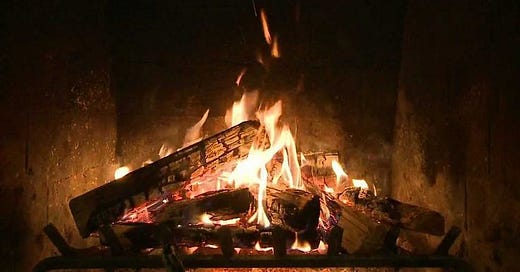The Yule Log is now a very tasty dessert enjoyed during the Christmas season but when it first emerged in Europe, primarily England it wasn’t something you ate but instead something you burned.
On Christmas Eve, typically at sunset, a large block of birch wood was laid across the back of a fireplace.
The family waited until the fire consumed the entire log and once it was gone, they would go outside and fire their muskets as a prelude to Christmas.
As settlers from the United Kingdom came to Newfoundland and Canada, they brought the tradition with them.
On Dec. 24, 1770, a British Army Officer named Captain George Cartwright wrote of how residents of Lodge Bay, Labrador celebrated Christmas Eve,
“At sunset the people ushered in Christmas, according to the Newfoundland custom. In the first place, they built up a prodigious large fire in their house; all hands then assembled before the door, and one of them fired a gun, loaded with powder only; afterwards each of them drank a dram of rum; concluding the ceremony with three cheers. These formalities being performed with great solemnity, they retired into their house, got drunk as fast as they could, and spent the whole night in drinking, quarreling, and fighting.”
The Yule log was sometimes called birch junk and was selected to last the 12 days of Christmas. It was hauled home and cut into three-foot chunks to fit into the hearth at the base of the chimney.
A very interesting part of the tradition involved the Yule log being taken out of the fireplace and thrown over the saddle of the roof to bring protection from fire through the coming year.
Unfortunately, my research didn’t tell me just how many fires were started because someone couldn’t throw the burning Yule log completely over.
Regardless ,the tradition of the Yule log began to disappear with the invention of the stove in the 1870s, but Parisian pastry chefs ensured the tradition was not entirely forgotten by reimagining the log in cake form.
Pierre Lacam is widely credited with publishing the first recipe for the bûche de Noël, a rich, airy sponge cake — sandwiched together with coffee- or chocolate-flavoured buttercream to create a log shape.




